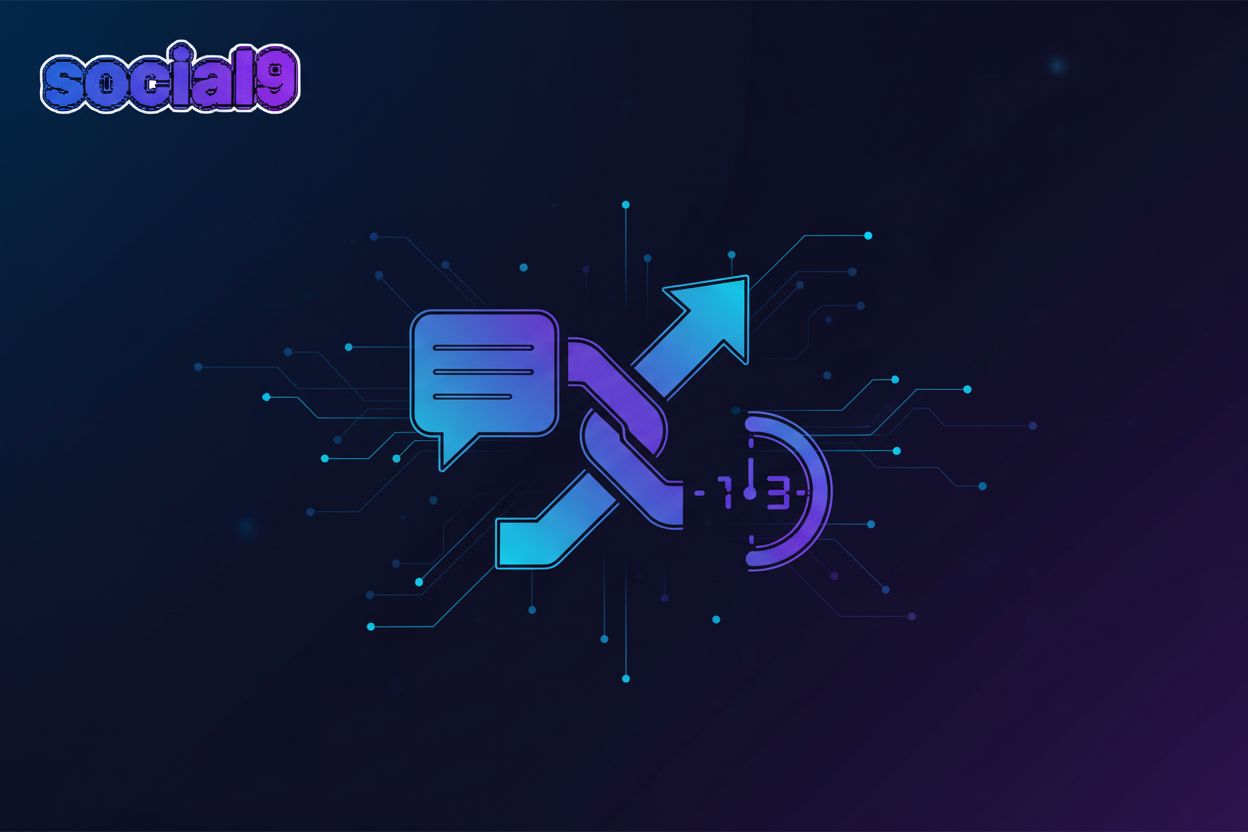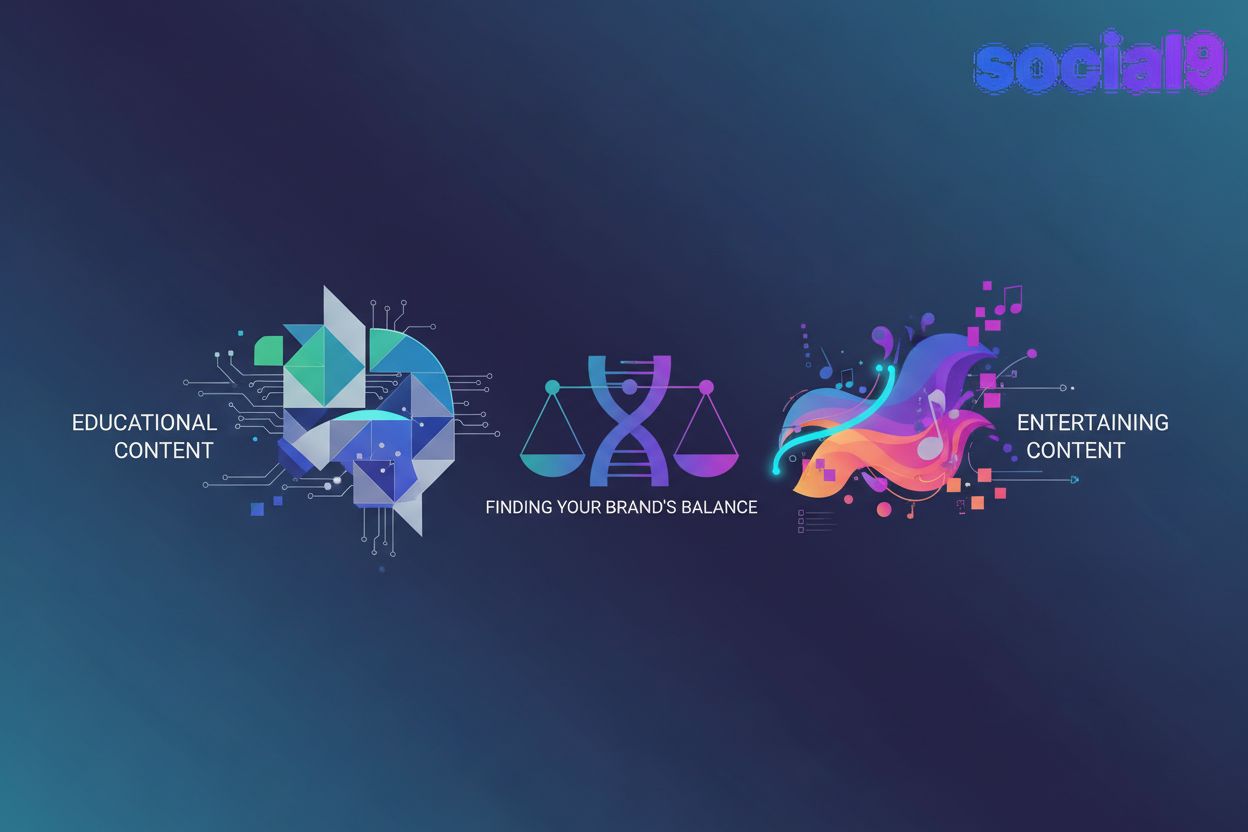Unlocking Social Media Insights: How Knowledge Graphs are Revolutionizing Content Creation
Introduction: The Power of Connected Data in Social Media
Imagine trying to understand a lively party by only eavesdropping on a few conversations – you'd miss most of the context. That's how traditional social media analysis often feels. But what if you could see how every person, topic, and idea connects?
Social media platforms generate vast amounts of unstructured data daily. This includes everything from tweets and posts to comments and shares.
- The sheer volume of this data creates challenges for extracting meaningful insights. Traditional methods often struggle to make sense of the noise.
- It's difficult to understand the relationships and context behind social media interactions. This makes it hard to identify trends and patterns.
- Advanced tools are needed to connect the dots and gain a holistic view of social media conversations. These tools must understand not just what is said, but also how it relates to other information.
Knowledge graphs offer a solution by providing a structured representation of entities, relationships, and concepts. They go beyond simple data storage to map out the connections between different pieces of information.
- Unlike traditional databases, knowledge graphs focus on relationships. They emphasize how different entities are connected, rather than just storing data in tables.
- Knowledge graphs excel at uncovering hidden patterns and insights in social media data. They enable a deeper understanding of user behavior and content performance.
- By using knowledge graphs, social media analysts can gain a more complete view of the social landscape. This leads to better decision-making and more effective strategies.
Here's a simple diagram illustrating how a knowledge graph connects different elements in a social media campaign:
(Imagine a diagram here showing nodes for 'User', 'Post', 'Topic', 'Brand', 'Hashtag', 'Event', and lines connecting them with labels like 'authored', 'mentions', 'is about', 'promotes', 'participated in', etc.)
Knowledge graphs provide a powerful way to unlock the hidden potential of social media data. Next, we'll explore how they work in practice.
How Knowledge Graphs Enhance Social Media Understanding
Did you know that 90% of information transmitted to the brain is visual? Knowledge graphs tap into this by visually connecting data points, making social media insights clearer than ever. This visual mapping helps us grasp complex relationships at a glance, much like how a well-drawn map makes navigating a city easier than just reading street names. Let's explore how these graphs revolutionize our understanding of social platforms.
Knowledge graphs make understanding social media content much easier. They help you analyze the meaning and context behind posts. This involves more than just looking at keywords; it's about understanding the semantics of the content.
- Knowledge graphs identify entities (people, places, things), relationships (how these entities connect), and sentiments (the emotion expressed). For example, a post about a new phone could be analyzed to identify the phone (entity), the reviewer's opinion (sentiment), and the phone's features (relationships).
- These graphs work with both text and multimedia content. They can analyze images, videos, and audio to extract relevant information. This provides a more complete understanding of the content’s message.
- By understanding context, knowledge graphs improve the accuracy of sentiment analysis and topic detection. This helps brands better understand how their audience perceives them.
Social media is all about connections. Knowledge graphs help map these connections to reveal valuable insights.
- They map relationships between users, topics, and communities. This shows how information flows and who the key players are.
- Knowledge graphs identify key influencers and opinion leaders. By analyzing network structures, they pinpoint individuals with significant reach and influence within specific areas. For example, in healthcare, a doctor with a large following and high engagement could be identified as an influencer.
- Analyzing network structures uncovers how information spreads. This helps you understand how content reaches different audiences and identify potential bottlenecks.
(Imagine a diagram here showing a network of users, with some users having more connections or being central to clusters, representing influencers and community hubs.)
Staying ahead of the curve is crucial in social media. Knowledge graphs help you spot trends early.
- Knowledge graphs identify emerging trends and patterns. By analyzing real-time data, they highlight what's gaining traction.
- They predict future trends using historical data and network analysis. This helps brands prepare their content strategies in advance.
- This enables proactive content creation and marketing. Instead of reacting to trends, you can create content that aligns with upcoming interests.
By understanding these trends, marketers can create content that resonates with their audience and drives engagement.
Now that we've explored how knowledge graphs enhance social media understanding, let's dive into the specifics of how they help create content.
Applications of Knowledge Graphs in Content Creation
Ready to transform your content strategy? Knowledge graphs can help you create smarter, more engaging content that truly resonates with your audience.
Knowledge graphs can inform ai models to generate relevant and engaging content. By understanding the relationships between different concepts, ai can produce more coherent and contextually appropriate content.
- Leveraging knowledge graphs helps ai models grasp the nuances of language and context. This ensures the generated content aligns with your audience's interests and expectations.
- Ai-powered tools can assist in creating content for various platforms, including Instagram, Facebook, Twitter/X, LinkedIn, TikTok, and YouTube. These tools use insights from knowledge graphs to tailor content to each platform's specific audience and format.
- For instance, a knowledge graph might reveal that a particular topic resonates strongly with a specific demographic on Instagram. The ai can then generate content that emphasizes this topic, using relevant visuals and hashtags. On TikTok, it might suggest trending audio clips or video formats. For LinkedIn, it could help craft professional posts highlighting industry insights.
Captions and hashtags are critical for maximizing the reach and engagement of your social media posts. Knowledge graphs can help you optimize these elements by identifying trending topics and relevant keywords.
- By analyzing the relationships between different hashtags, you can identify those that are most likely to drive traffic to your content. For example, if you're posting about sustainable fashion, a knowledge graph might suggest using hashtags like #ecofriendlyfashion and #ethicalclothing alongside more general terms like #fashion.
- Smart captions provide context and encourage user interaction. Knowledge graphs can help you generate captions that are both informative and engaging.
- For example, a post about a new electric vehicle could include a caption that highlights its environmental benefits. It could also include a call to action that prompts users to share their thoughts on electric vehicles.
Content templates can streamline your content creation process, but it's important to customize them to align with your brand voice and target audience. Knowledge graphs can provide insights into what types of content resonate most with your audience.
- By analyzing past performance data and identifying key themes, you can adapt pre-built templates to create content that feels fresh and relevant. This ensures that your content aligns with your brand's messaging and values.
- For example, if your brand is known for its humorous and lighthearted content, you can customize a template to reflect this tone. If your audience is particularly interested in sustainability, you can tailor the content to emphasize the environmental benefits of your products or services.
- Adapting content templates based on knowledge graph insights save time and effort. It also ensures that your content aligns with your brand voice and target audience.
(Imagine a diagram here showing how a knowledge graph can suggest content themes, keywords, and even visual styles based on audience data and platform trends.)
By using knowledge graphs to inform your content creation process, you can create more engaging and effective social media campaigns. Now, let's delve into how knowledge graphs can enhance marketing strategies.
Improving Social Media Marketing Strategies with Knowledge Graphs
Want to make your social media ads more effective? Knowledge graphs can help you target the right audiences and optimize your ad spend.
Using knowledge graphs to identify relevant audience segments based on interests and behaviors is a game-changer. These graphs analyze vast amounts of social media data to understand what different groups of people care about.
- Knowledge graphs can reveal hidden connections between users, content, and topics. This allows you to create highly specific audience segments.
- For example, a knowledge graph might identify a segment of users interested in both sustainable living and outdoor adventures. This insight enables targeted campaigns featuring eco-friendly camping gear or responsible travel options.
- In the healthcare industry, knowledge graphs can help identify patients with specific conditions or concerns. This allows for targeted advertising of relevant treatments or support services while adhering to privacy regulations. This is often achieved through anonymization and aggregation of data, meaning individual identities are protected by grouping data into larger, non-identifiable sets.
Creating targeted advertising campaigns that resonate with specific groups is essential for success. Generic ads often fail to capture attention or drive engagement.
- By understanding the unique interests and needs of each audience segment, you can craft personalized ad copy and visuals. Knowledge graphs help ensure that your message aligns with what matters most to your target audience.
- For instance, a financial services company can use knowledge graphs to identify potential investors interested in socially responsible investing. The company can then create ads that highlight the ethical and environmental benefits of their investment products.
- A retail brand can use knowledge graphs to target fashion-conscious consumers with ads featuring the latest trends and styles. Tailoring the message improves the likelihood of engagement and conversions.
Optimizing ad spend by focusing on the most receptive audiences is a critical benefit of using knowledge graphs. Instead of wasting resources on broad, untargeted campaigns, you can concentrate your efforts on the segments most likely to respond positively.
- Knowledge graphs can help you track the performance of your ads across different audience segments. This allows you to identify which segments are generating the best results and adjust your ad spend accordingly.
- For example, an e-commerce platform can use knowledge graphs to identify high-value customers who are most likely to make repeat purchases. By focusing on these customers, the platform can maximize its return on investment.
- A B2B software company can use knowledge graphs to target decision-makers in specific industries or roles. This ensures that their ads reach the people who are most likely to be interested in their products or services.
(Imagine a diagram here showing how a knowledge graph can map audience segments to specific campaign objectives and predict ROI.)
Identifying the most influential individuals within specific niches is key to successful influencer marketing. Knowledge graphs excel at mapping relationships and identifying key players in social networks.
- These graphs analyze factors like follower count, engagement rate, and content relevance to identify influencers who have a significant impact on their audience.
- For example, a beauty brand can use knowledge graphs to identify makeup artists or skincare experts who have a large and engaged following among their target demographic.
- A food delivery service can use knowledge graphs to identify food bloggers or culinary enthusiasts who have a strong influence on dining decisions in a particular region.
Measuring the impact of influencer campaigns on brand awareness and sales is crucial for determining their effectiveness. Knowledge graphs can provide valuable insights into how influencer content is performing and how it is affecting consumer behavior.
- By tracking metrics like reach, engagement, and conversions, you can assess the ROI of your influencer marketing efforts.
- For example, a clothing retailer can use knowledge graphs to track how many people visited their website or made a purchase after seeing an influencer's post featuring their products.
- An event organizer can use knowledge graphs to measure how many people attended their event after seeing an influencer's promotion.
Building long-term relationships with key influencers can create sustained brand loyalty and advocacy. Knowledge graphs can help you identify influencers who are genuinely aligned with your brand values and who have a proven track record of driving positive results.
- These relationships can lead to ongoing collaborations, exclusive content, and increased brand visibility.
- For example, a travel company can partner with travel bloggers to create a series of sponsored posts and videos showcasing their destinations and services.
- A fitness brand can collaborate with fitness instructors to offer exclusive workout classes and training programs to their followers.
By leveraging knowledge graphs, brands can optimize their influencer marketing campaigns. This ensures that they are reaching the right audiences and achieving their desired outcomes.
Now that we've explored how knowledge graphs enhance social media marketing strategies, let's discuss the challenges involved.
Challenges and Considerations When Implementing Knowledge Graphs
Implementing knowledge graphs isn't always smooth sailing; it comes with its own set of challenges. Let's navigate these hurdles to ensure a successful implementation.
High-quality data is the bedrock of any effective knowledge graph. Without it, the insights you derive could be misleading.
- Accurate and complete data is crucial for building a reliable knowledge graph. This means cleansing your social media data to remove errors, inconsistencies, and irrelevant information.
- Strategies for cleaning and validating data include using automated tools to identify and correct errors. Tools like OpenRefine or specialized data quality platforms can help. You can also manually review data samples to ensure accuracy, focusing on critical entities or relationships.
- Addressing biases and inconsistencies is vital. For instance, sentiment analysis can be skewed by biased training data. Regular audits and diverse data sources can help mitigate these issues.
Social media data is constantly growing, so your knowledge graph needs to keep up. Scalability and performance are key to handling this ever-increasing volume.
- Design knowledge graphs to manage large data volumes. Consider using distributed graph databases that can scale horizontally.
- Optimize query performance for real-time analysis. Indexing and caching frequently accessed data can significantly speed up query times.
- Choosing the right technology stack is crucial. Options include graph databases like Neo4j or cloud-based solutions like Amazon Neptune, depending on your specific needs and resources.
(Imagine a diagram here illustrating potential data quality issues like missing values, duplicates, and inconsistencies, and how they can be resolved.)
Handling social media data responsibly is paramount. You must navigate privacy regulations and ethical concerns carefully.
- Ensure compliance with data privacy regulations like GDPR and CCPA. Obtain user consent when required and anonymize data to protect individual privacy.
- Protect user privacy when analyzing social media data. Avoid collecting or storing sensitive personal information unless absolutely necessary.
- Address ethical concerns related to data collection and usage. Be transparent about how you use the data and avoid using it in ways that could be discriminatory or harmful.
Overcoming these challenges requires careful planning and execution. By addressing data quality, scalability, and ethical considerations, you can unlock the full potential of knowledge graphs for social media analysis.
Next, we'll explore practical tools and technologies that can help you build and manage knowledge graphs effectively.
Tools and Technologies for Building Knowledge Graphs
Ready to build your own knowledge graph? Several tools and technologies can help harness connected data for social media insights.
- Graph databases like Neo4j store and query knowledge graphs efficiently. They use graph structures with nodes and relationships, making it easy to traverse connections.
- Semantic web technologies such as RDF (Resource Description Framework) and SPARQL (SPARQL Protocol and RDF Query Language) help represent and query data. RDF provides a standard way to model information as triples (subject-predicate-object), ensuring standardized data representation. SPARQL then allows you to query this RDF data, much like SQL for relational databases, but for graph-like structures.
- AI/ML libraries like TensorFlow aid in creating graph embeddings. They enhance entity recognition and relationship extraction. Graph embeddings are essentially numerical representations of nodes and edges in a graph, learned by ai models. These embeddings capture the structural properties and relationships within the graph, making it easier for machine learning algorithms to process and understand the data for tasks like predicting missing links or classifying nodes. TensorFlow, with its extensive capabilities, can be used to train these embedding models.
Next, we'll explore the best practices for managing these knowledge graphs.
The Future of Knowledge Graphs in Social Media
The future of social media is about to get a whole lot smarter. Knowledge graphs will play a pivotal role in how we understand and interact with online content.
- Expect to see enhanced personalization, where content is tailored to individual users based on deeper understanding of their interests and social connections.
- Improved trend prediction will enable brands to anticipate and capitalize on emerging topics before they peak.
- Knowledge graphs will power more sophisticated ai models for content creation and moderation.
Innovations are on the horizon, promising to transform social media as we know it. Keep an eye on these spaces!





